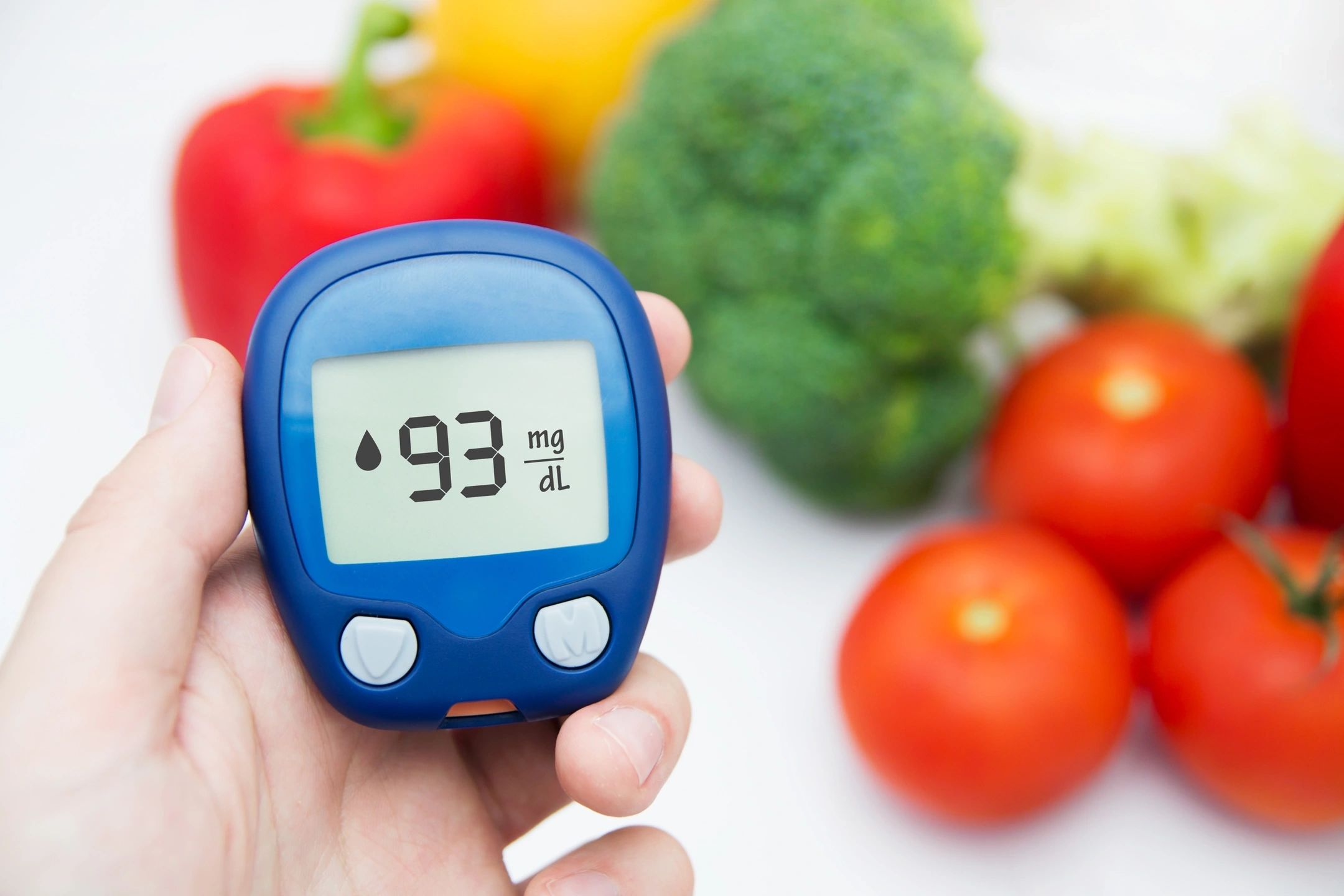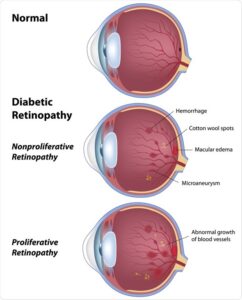Diabetic Retinopathy

Diabetic Retinopathy
Dr. Claire Arcidiacono, ND
Diabetic retinopathy is an eye disease that is associated with diabetes. Diabetes as you can guess is a huge health concern. In fact in the United States in 2021 diabetes was found to be the 8th leading cause of death. In fact in 2021 38.4 million Americans or 11.6% of the population had diabetes. (1) Anyone who has diabetes of any type is at risk of developing diabetic retinopathy. However the less controlled your blood sugar is the higher your risk of developing diabetic retinopathy. (2) For more information on diabetes please check out my blog series on this important topic.
What is diabetic retinopathy? Well it might surprise you to learn but there is actually 2 types of diabetic retinopathy. To start with let’s just do a general overall of diabetic retinopathy first. Basically when you have diabetic retinopathy there is too much sugar in your blood and this high sugar occurs over a longer period of time. This high concentration of sugar in your blood can affect your blood vessels by either blocking them or causing them to dilate and become damaged. In some cases to try and compensate for the reduction in blood flow caused by the blockages the eyes will start to grow new blood vessels. However these new blood vessels, or the dilated blood vessels are “leaky” and can ooze fluid and blood into the retina. Now as I said that’s a basic definition. Remember how I said that there are 2 types of diabetic retinopathy? Let’s talk more about that, shall we? The most common type is early diabetic retinopathy, which is called nonproliferative diabetic retinopathy (NPDR). It is important to note that this form can change over time to advanced diabetic retinopathy, which is called proliferative diabetic retinopathy (PDR). Now I bet your thinking but what the heck is the difference? Basically in NPDR the walls of the blood vessels bulge or dilate due to the sugar taking up space in the vessels. This causes them to weaken and become as I’ve said “leaky” and fluids leak into the retina causing damage. As the blockage becomes worse the eyes begin to compensate by growing new but leaky blood vessels. This is where PDR comes into play. As you can guess in PDR the blood vessels are blocked and new blood vessels form which leak which can lead to scar tissue formation and that scar formation can cause damage to the retina. The leaked fluids can also build up which can increase glaucoma risk. (2) But what does this all look like? Please see the attached picture. (3)

What are the risk factors for developing diabetic retinopathy? Well I bet you can guess the first one! If you said having diabetes you would be correct! In fact studies estimate that in those with type 2 diabetes between 29.5-40.3% have diabetic retinopathy. (4) The longer you have diabetes the higher your risk becomes. Having poor control of your blood sugar also increases your risk. Having a history of high blood pressure, high cholesterol and even tobacco use can all increase your risk. Lastly being pregnant and being of certain ethnic backgrounds can all increase your risk. For example being of African American, Hispanic or Native American background can all place you in a high risk category for diabetic retinopathy. (2)
Like many diseases that affect our eyes diabetic retinopathy may not present with symptoms in the early stages. As the disease gets worse you may have floaters as well as dark or empty spots in your vision. You may have blurry vision. Over time you may experience vision loss. (2)
What are the most common complications? Diabetic macular edema occurs in about half of those who have diabetic retinopathy. Another possible complication is vitreous hemorrhage. Diabetic retinopathy increases the risk of both glaucoma and retinal detachment. (5) Over time diabetic retinopathy can lead to complete vision loss. (2)
What can you do to help reduce your risk of diabetic retinopathy? Well let’s review a few things, shall we?
- One of the most important things you can do is to control your diabetes. The worse control over your diabetes is the higher your risk of diabetic retinopathy. (5) For information on how to control your diabetes please check out my blog series!
- It is also important to keep your cholesterol under control and to stop smoking.
- As with any condition that affects our eyes it is also important to monitor your vision for any changes. (2)
- Horse chestnut may seem like an odd recommendation but stop and think for a moment. Studies show that horse chestnut can help strengthen blood vessels and even help circulation. (6) Both of these things are important in diabetic retinopathy. Please see Invite’s Veins Hx.
- Vitamin C has been found to be associated with a lower risk of diabetic retinopathy. (7) Please see Invite’s extensive line of vitamin C products as well as our Immunity Hx, Veins Hx and Macula Advanced.
- Vitamin E has also been found to be associated with a reduced risk of diabetic retinopathy. (7) Please see Invite’s Tocotrienols with Pine Bark and our Macula Advanced Hx!
- Bilberry will be our product highlight. I do want to point out that Bilberry has been found to help protect against diabetic retinopathy! (8) Please see Invite’s Macula Advanced Hx, our Purples Hx and even our amazing Reds Hx!
Sources:
- https://diabetes.org/about-diabetes/statistics/about-diabetes
- https://www.mayoclinic.org/diseases-conditions/diabetic-retinopathy/symptoms-causes/syc-20371611
- https://www.google.com/imgres?imgurl=https%3A%2F%2Fd2jx2rerrg6sh3.cloudfront.net%2Fimage-handler%2Fpicture%2F2015%2F12%2FDiabetic_Retinopathy_2.jpg&tbnid=yNlaNvgRf98UIM&vet=1&imgrefurl=https%3A%2F%2Fwww.news-medical.net%2Fhealth%2FDiabetic-eye-disease-diabetic-retinopathy-stages.aspx&docid=26tVsIgmcCp3FM&w=590&h=730&hl=en-us&source=sh%2Fx%2Fim%2Fm4%2F7&kgs=ff6bb476a1f43b24&shem=abme%2Ctrie
- https://www.ncbi.nlm.nih.gov/pmc/articles/PMC4657234/
- https://www.webmd.com/diabetes/diabetic-retinopathy-complications
- https://www.ncbi.nlm.nih.gov/pmc/articles/PMC7144685/
- https://www.mdpi.com/2077-0383/11/21/6490
- https://www.ncbi.nlm.nih.gov/pmc/articles/PMC10181411/#sec8-nutrients-15-02031title
